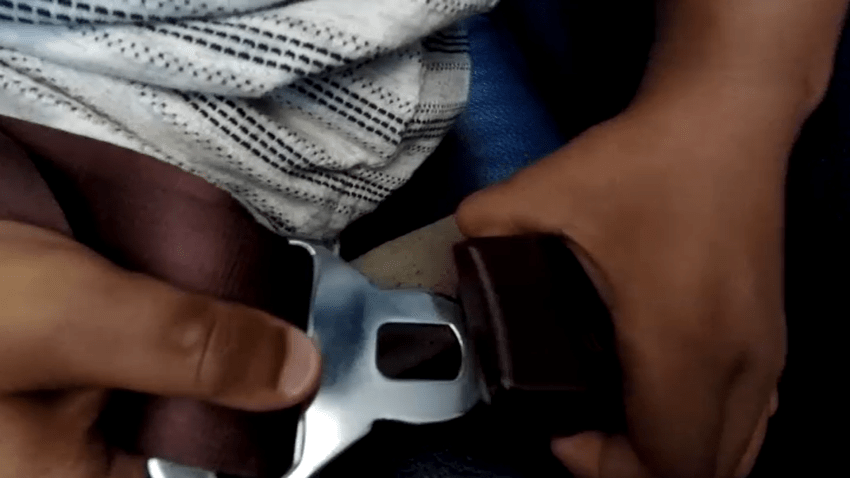A video was released of a school bus crash in Ohio where children fly out of their seats as the bus flips. Now people are questioning why there are not seat belts on every school bus and pushing for them to be installed. NBC10’s Tim Furlong tells us more.
A video of an Ohio school bus flipping over and sending kids flying from their seats into the roof is making some people wonder whether seat belts should be mandated on all school buses.
But while such accidents send chills down the spine of parents, national safety data suggests that school buses remain the safest mode of transportation for children, even without seat belts.
A big reason for that is that large school buses are designed to withstand impact through compartmentalization. This design concept provides a “protective envelope” around students by placing strong, high energy-absorbing, padded seats close together, according to the National Highway Traffic Safety Administration.
Put another way, “Students are protected within the seating compartment much like eggs in a carton,” according to the National Transportation Safety Board.
Anyone who watched the Ohio crash will also notice that, while the kids hit the roof, the roof didn’t break. That’s because school buses also have minimum roof crush requirements, according to the NHTSA.
And, because school buses are so big and heavy, the impact from a crash is distributed differently than it would be in a car, light truck or van, meaning that people in a school bus “experience much less crash force,” according to the NHTSA.
Local
Breaking news and the stories that matter to your neighborhood.
The exception is buses weighing less than 10,000 pounds, like those used to transport special education students. Because they are closer in size to regular cars and trucks, the NHTSA does require seat belts in small buses to “provide occupant protection.”
Still, only four to six school-age children die each year on school buses, less than one percent of all traffic fatalities nationwide, according to the NHTSA. This means kids are about 70 times more likely to get to school safely on a school bus than they would if traveling in a car.
Those figures translate locally, too.
In 2018, there were 31,381 registered school buses in Pennsylvania, according to the state department of transportation. In the 2017/18 school year, more than 1.52 million students a day took the school bus.
But, of the more than 1,600 crashes involving school buses from 2014 to 2018, only 19 resulted in death, according to PennDOT. Of those deaths, only one person in the school bus itself died: a driver involved in a crash in 2017. The rest of the deaths were made up of pedestrians or drivers and passengers in other vehicles involved in the crashes.
However, there are drawbacks to not having seat belts.
The NTSB notes that despite school buses being “extremely safe,” they are susceptible to rollover crashes, like the one in Ohio.
“In these accidents, compartmentalization was not enough to prevent all injuries; for some of the children involved, a seat belt could have lessened their injuries or even saved their lives,” the NTSB said while recommending three-point seat belts for new buses.
To date, only eight states – California, Florida, Louisiana, Nevada, New Jersey, New York and Texas – require seat belts on school buses. Even then, school bus seat belt laws in Arkansas, Louisiana and Texas “are subject to appropriations or approval or denial by local jurisdictions,” according to the National Conference of State Legislatures.

The cost of those seat belts also poses a financial problem. Newer buses can cost anywhere between $80,000 and $120,000 a piece, according to the NCSL. Adding seat belts could cost between $7,000 and $10,000 per bus, and retrofitting older buses “costs even more,” according to the NCSL.
“Additionally,” the NCSL notes, “there is debate about whether children can quickly unbuckle and evacuate buses if needed during emergencies, such as a fire or being submerged in water.”
The NCSL also pointed out a New Hampshire report that concluded there was “insufficient data to decide if requiring seat belts to be worn on school buses would result in a net decrease in deaths and injuries.”



